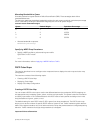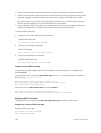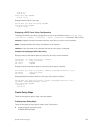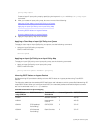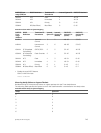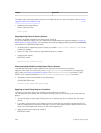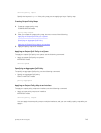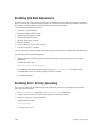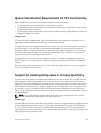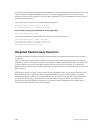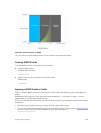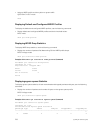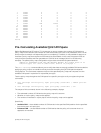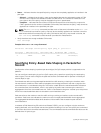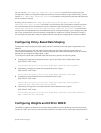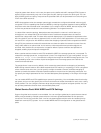
Queue Classification Requirements for PFC Functionality
Queue classification requirements for PFC functionality are mentioned below:
• On untagged ports, Queue classification must be based on DSCP.
• On tagged ports, Queue classification must be based on Dot1p. Layer 3 classification configurations
should not be present on the port.
• On hybrid ports, Queue classification can be based on either Dot1p (for tagged packets) or DSCP (for
untagged packets) but not both.
Example Case:
PFC does not work for tagged traffic, when DSCP based class map is applied on a hybrid port or on a
tagged port. Assume two switches A and B are connected back to back.
Consider the case where untagged packets arrive on switch A, if you want to generate PFC for priority 2
for DSCP range 0-7, then you have to match the interested traffic. You must use the class map and
associate to queue 1 using the policy map. The same class map needs to be applied in switch B as well
and when queue 1 gets congested, PFC would be generated for priority 2. Switch A on receiving PFC
frames with priority 2 would stop scheduling queue 1.
If a tagged packet with VLAN dot1p as 5 ingresses on switch A. Consider that tagged packet also has
DSCP in range of 0-7.These packets will match the class map and get queued on queue 1 on both the
switches.
But when queue 1 gets congested on switch B, PFC frames for tagged packets will not be generated as
PFC is not enabled on dot1p priority 5.
Support for marking dot1p value in L3 Input Qos Policy
In case the incoming packet is untagged and the packet which goes out to the peer is tagged, then the
dot1p should be marked appropriately using L3 Input Qos Policy. This is required because in the peer
switch PFC will be generated based on the dot1p value. Currently if the ingress is untagged and egress is
tagged, then dot1p priority 0(default) will be added as part of the tag header and from the next hop PFC
will be based on that dot1p priority. Support is added to mark the dot1p value in the L3 Input Qos Policy
in this feature. Hence it is possible to mark both DSCP and Dot1p simultaneously in the L3 Input Qos
Policy. You are expected to mark the Dot1p priority when the ingress packets are untagged but go out to
the peer as tagged
NOTE: L2 qos-policy behavior will be retained and would not be changed, that is we would not
allow to set both DSCP and Dot1p in the L2 Input Qos Policy.
Example case:
Consider that two switches A and B are connected back to back via a tagged interface. Consider the case
where untagged packets arrive on switch A, if you want to generate PFC for priority 2 for DSCP range
0-7, then you must need to match the interested traffic using the class map. You should create an L3
Input Qos Policy and mark vlan dot1p as 2. You have to associate both the L3 class map and L3 Input Qos
Policy to queue 1 using the policy map.
Quality of Service (QoS)
747



